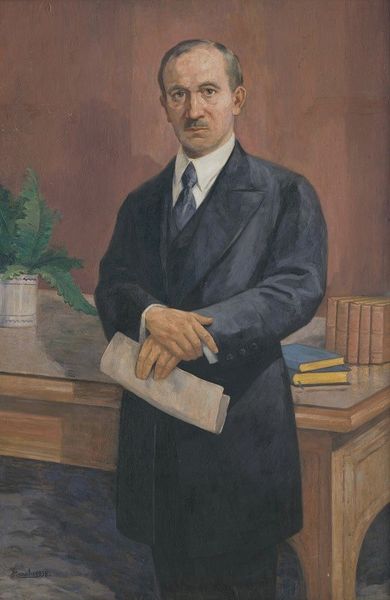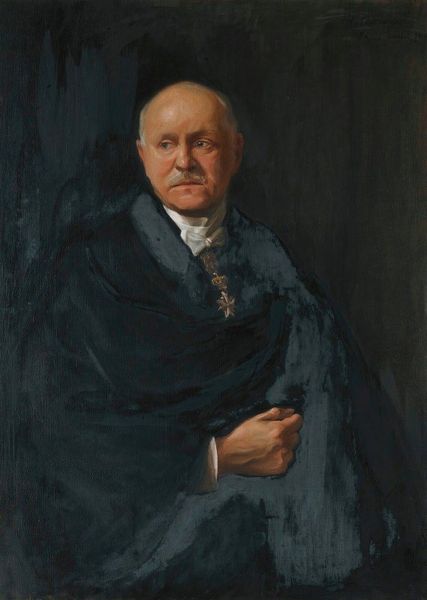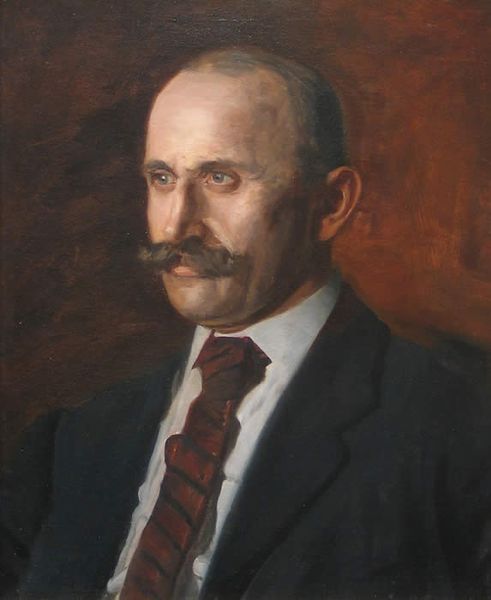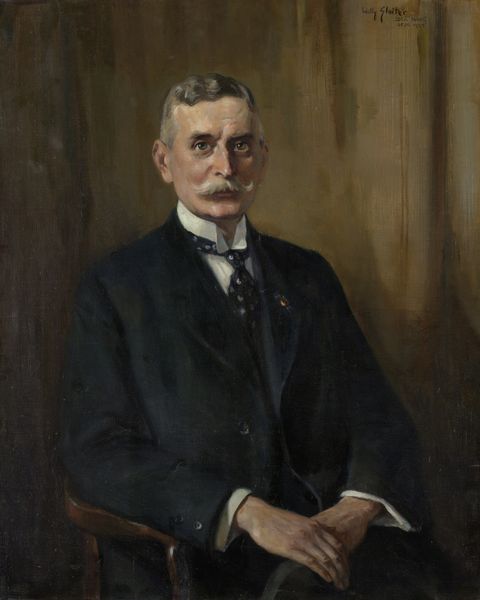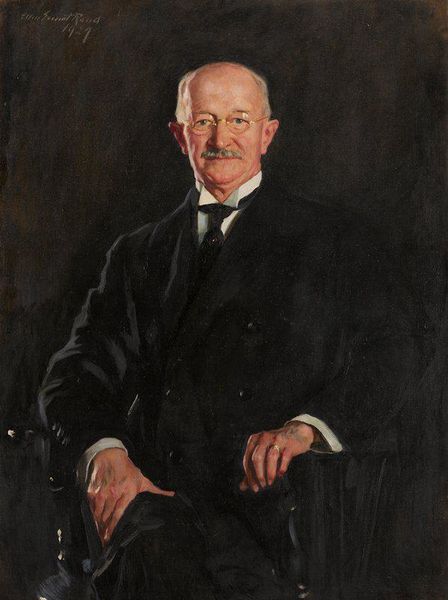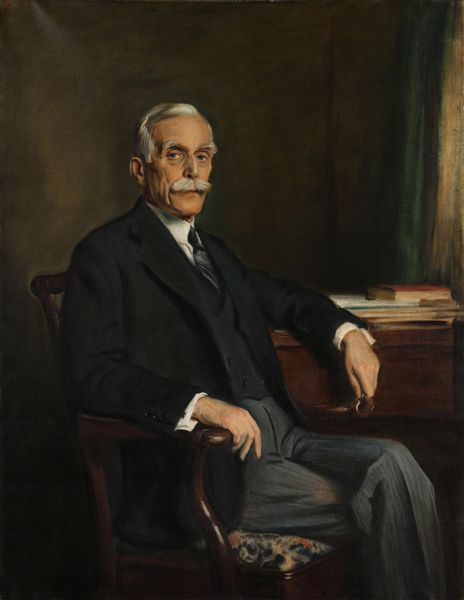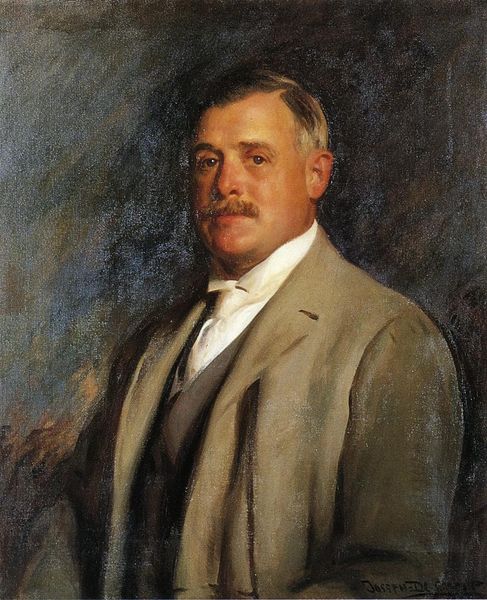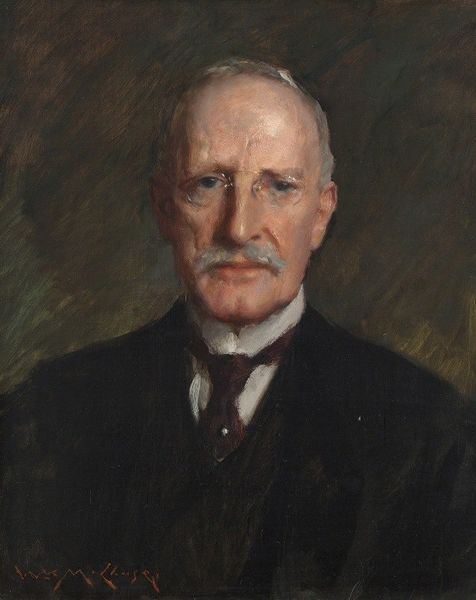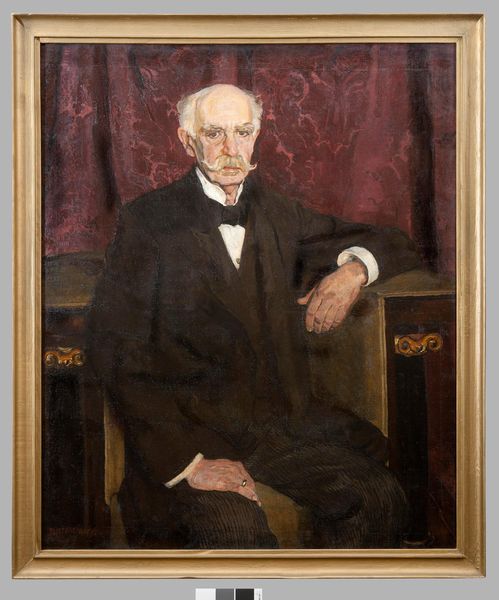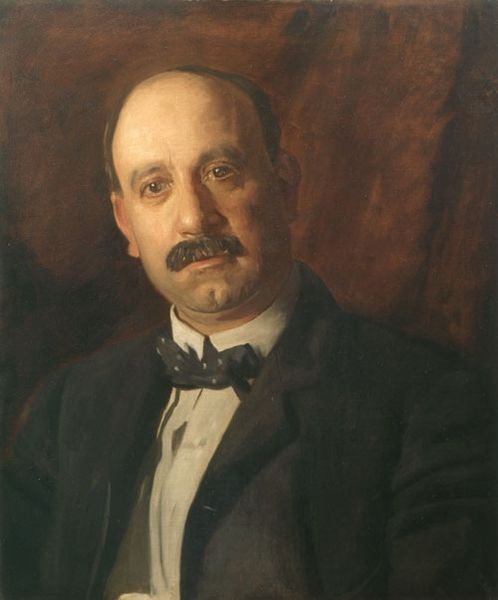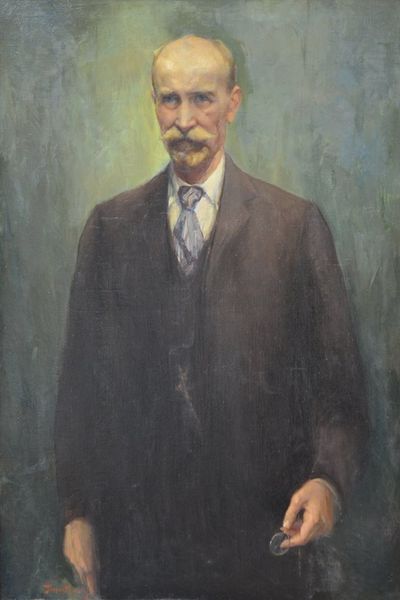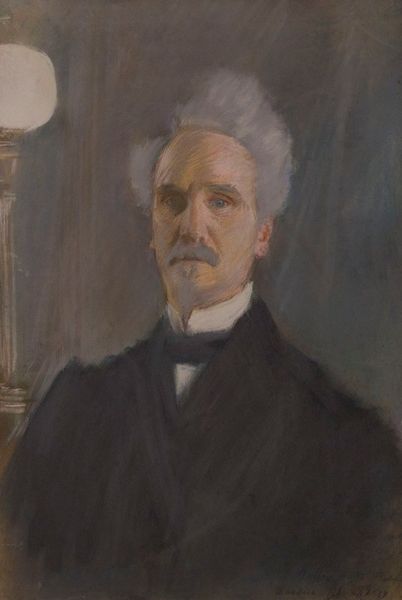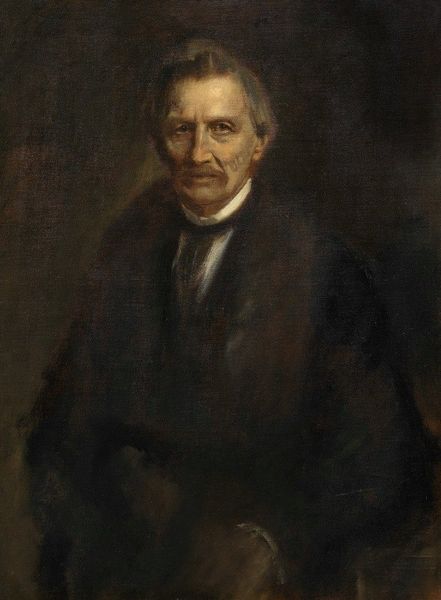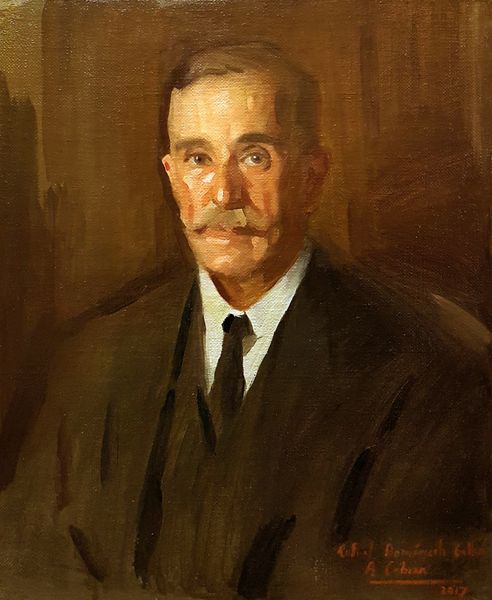
oil-paint
#
portrait
#
figurative
#
oil-paint
#
figuration
#
oil painting
Copyright: Public Domain: Artvee
Editor: So, here we have Jozef Hanula’s “Ferko Skycák,” created in 1928 using oil paint. It's a striking portrait; what really jumps out at me is this almost subdued power emanating from the figure. What do you see in this portrait? Curator: I'm immediately drawn to the weight of history embedded in his gaze. The name "Skycák" itself suggests someone tied to the earth, a grounded figure. Note the earthy tones, particularly in his skin, that subtly reinforce this connection. Tell me, what symbolic cues are catching your attention? Editor: Well, there's the gold ring, a symbol of status, but it also speaks to the subject's connection to perhaps family and continuity? It grounds him despite the somewhat somber background. Curator: Precisely. The contrast is compelling. This somber background, while dark, also recalls classic portraiture—the sort intended to establish legacy. Do you think the artist intended to show that legacy under pressure? Perhaps commenting on social changes during the time? Editor: Possibly! Given the date, right before the Great Depression, maybe the painting is communicating something about a shift in class structures and enduring values… it feels like a statement of resilience. Curator: Indeed, and it prompts one to think: what is the emotional cost of this resilience? Is it etched into his face? He's not smiling. Editor: It does make me think about the weight of responsibility he carries. So, through what might seem like a standard portrait, Hanula really invites us to contemplate the human impact of societal change. Curator: And that visual conversation, across almost a century, demonstrates art’s capacity to compress meaning through carefully chosen symbols. It allows figures to speak again, laden with stories. Editor: Definitely. I am going to spend a long time unpacking symbols in portraiture.
Comments
No comments
Be the first to comment and join the conversation on the ultimate creative platform.
